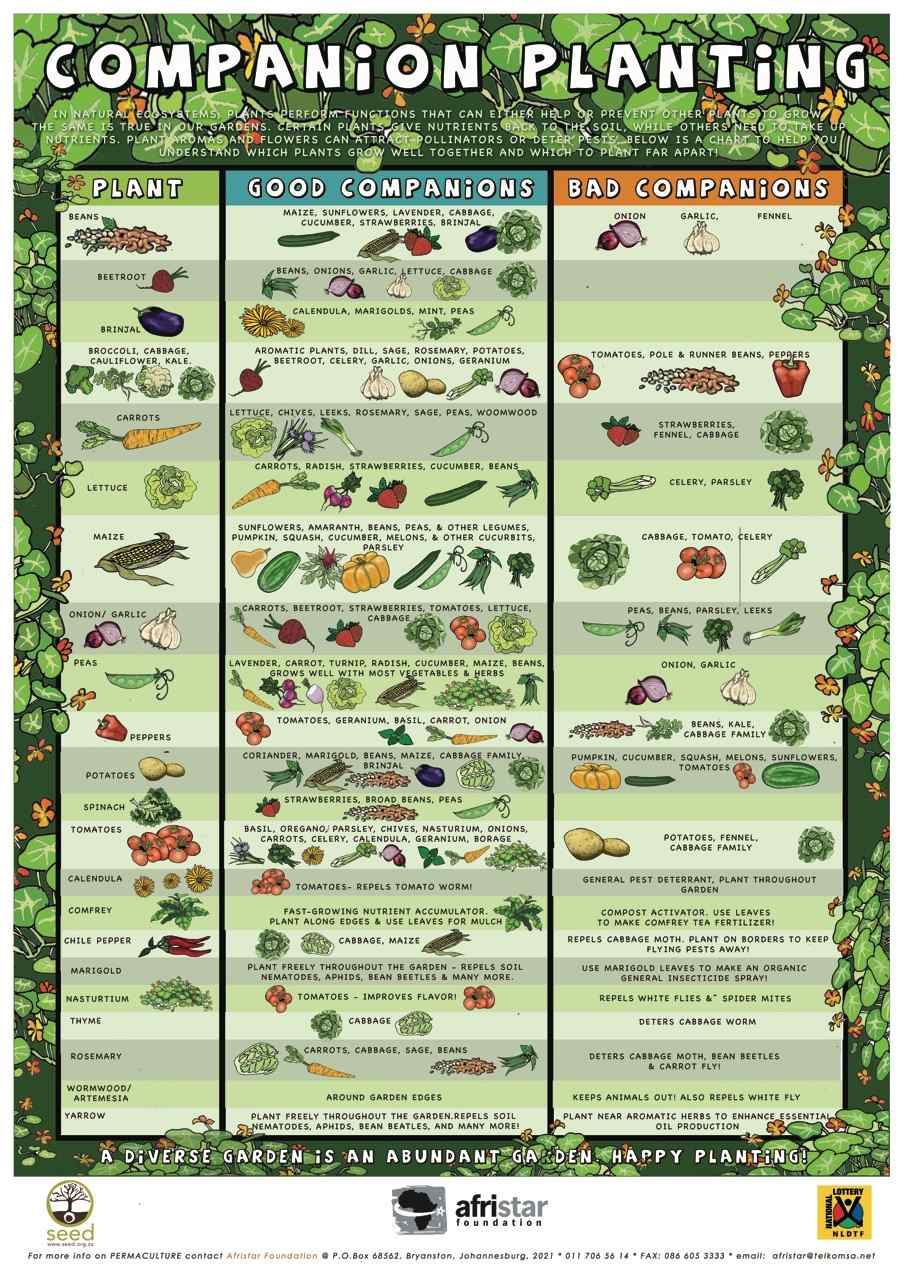The Ultimate Guide To Companion Planting: Grow A More Productive And Pestfree Garden
The Ultimate Guide to Companion Planting: Grow a More Productive and Pest-Free Garden
Companion planting is an ancient gardening practice that involves planting certain plants together for mutual benefit. By carefully selecting which plants to grow near each other, you can improve the health, productivity, and pest resistance of your garden.
There are many different benefits to companion planting. Some of the most common include:
- Attracting beneficial insects. Many companion plants attract beneficial insects, such as ladybugs, hoverflies, and lacewings. These insects help to control pests, such as aphids, caterpillars, and whiteflies.
- Distracting pests. Some companion plants have strong scents that can distract pests from other plants. For example, planting mint near tomatoes can help to deter tomato hornworms.
- Improving soil health. Some companion plants help to improve soil health by fixing nitrogen, aerating the soil, or attracting earthworms.
- Providing shade and windbreaks. Some companion plants can provide shade and windbreaks for other plants. This can help to protect plants from pests and diseases.
If you're new to companion planting, it can be helpful to start by learning about the basic principles. There are a few key things to keep in mind when choosing companion plants:
- Plants with similar needs. It's important to plant companion plants that have similar needs for sunlight, water, and soil type. This will help to ensure that both plants thrive.
- Plants with complementary growth habits. Some plants have different growth habits, such as trailing or upright. By planting companion plants with complementary growth habits, you can help to create a more balanced and attractive garden.
- Plants with beneficial relationships. Some plants have beneficial relationships with each other. For example, beans and peas fix nitrogen in the soil, which can benefit other plants.
Once you've learned the basic principles of companion planting, you can start to experiment with different combinations of plants. There are many resources available to help you find companion planting charts and lists. You can also ask other gardeners for recommendations.
With a little planning, you can use companion planting to create a more productive and pest-free garden. Here are a few examples of companion plants that work well together:
- Beans and peas: These legumes fix nitrogen in the soil, which benefits other plants.
- Carrots and onions: The strong scent of onions deters carrot fly, a common pest of carrots.
- Cucumbers and beans: Cucumbers and beans have different growth habits, so they don't compete for space.
- Lettuce and tomatoes: Lettuce shades the soil around tomatoes, which helps to prevent blossom end rot.
- Marigolds and tomatoes: Marigolds repel nematodes, a common pest of tomatoes.
These are just a few examples of companion plants that work well together. There are many other possibilities, so experiment and find what works best for your garden.
Are you looking for a way to boost your garden's productivity and attract more beneficial insects? If so, you should consider companion planting. Companion planting is the practice of planting certain types of plants together to benefit each other. For example, some plants attract pollinators, while others repel pests. By planting the right plants together, you can create a thriving ecosystem in your garden that will help your plants grow healthy and strong.
If you're interested in learning more about companion planting, I recommend visiting Gardenia Inspiration. This website has a comprehensive guide to companion planting that includes information on which plants work well together, as well as tips on how to get started.
FAQ of guide to companion planting
Q1: What is companion planting?
A: Companion planting is the practice of planting certain plants together to benefit each other. Some plants can help to attract beneficial insects, repel pests, or improve the overall health of their neighbors.
Q2: What are some benefits of companion planting?
A: There are many benefits to companion planting, including:
- Increased crop yields
- Improved plant health
- Reduced pest and disease problems
- Attracted beneficial insects
- Enhanced soil quality
Q3: How do I choose companion plants?
A: There are many resources available to help you choose companion plants. Some good places to start include:
- Books on companion planting
- Online websites and forums
- Local gardening experts
Q4: What are some common companion plants?
A: Some common companion plants include:
- Tomatoes and basil
- Carrots and onions
- Beans and corn
- Marigolds and tomatoes
- Cabbage and nasturtiums
Q5: How far apart should companion plants be planted?
A: The distance between companion plants will vary depending on the specific plants involved. However, as a general rule, you should plant them close enough together so that their roots can interact, but not so close together that they compete for resources.
Image of guide to companion planting
- Image 1: A diagram showing different companion plants and their benefits. For example, tomatoes and basil are good companions because they repel pests from each other.

- Image 2: A list of companion plants, organized by vegetable type. This is a great way to see which plants are compatible with each other.

- Image 3: A photo of a garden bed with companion plants arranged in a beneficial way. This is a great visual guide for how to put companion planting into practice.

- Image 4: A chart showing the different effects that companion plants have on each other. This is a more detailed look at the science of companion planting.

- Image 5: A blog post about the benefits of companion planting. This is a great resource for learning more about the topic.
Post a Comment for "The Ultimate Guide To Companion Planting: Grow A More Productive And Pestfree Garden"